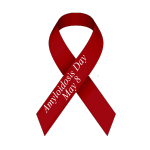National Amyloidosis Day in Australia Date in the current year: May 8, 2026
 National Amyloidosis Day, also known as Australian National Amyloidosis Day and National Amyloidosis Awareness Day, is observed in Australia annually on May 8. It was created to raise awareness of a group of rare diseases that can affect multiple organs and systems of the body.
National Amyloidosis Day, also known as Australian National Amyloidosis Day and National Amyloidosis Awareness Day, is observed in Australia annually on May 8. It was created to raise awareness of a group of rare diseases that can affect multiple organs and systems of the body.Amyloidosis is an umbrella term for a group of diseases characterized by the buildup of abnormal proteins called amyloids in tissues. There are several dozen types of amyloidosis, each linked to a specific type of protein. Some types of amyloidosis are localized, i.e. affect primarily a single organ, and some are systemic, i.e. affect multiple organs and tissues or the body as a whole.
The most common organs affected by amyloidosis are the kidneys and heart. High levels of amyloids in the kidneys can result in end-stage chronic kidney disease that requires dialysis, and amyloid deposition in the heart can cause heart failure. Other organs and systems that can be affected include the nervous system, gastrointestinal system, endocrine system, musculoskeletal system, eyes, and the oral cavity.
Amyloidosis is frequently misdiagnosed and under-recognized because its early symptoms (fatigue, weight loss, swollen legs, shortness of breath, palpitations, feeling light-headed or fainting after standing or sitting up) are pretty vague and non-specific. Confirmation of the diagnosis usually requires tissue biopsy.
The usual age of onset for two of the most common types of systemic amyloidosis, AA and AL, is 55 to 60 years old, but other types of the disease may affect younger people. Life expectancy for people with untreated systemic amyloidosis is between six months and four years. The prognosis and treatment depend on the type of amyloidosis and the affected organ or organ system.
There is no cure for amyloidosis, and there is no way to remove the already existing amyloid deposits. Amyloidosis treatment focuses on preventing the formation of new abnormal proteins in the bone marrow and relieving specific symptoms. It may include chemotherapy, stem cell transplantation, and various medications depending on the type of amyloidosis.
Australian National Amyloidosis Day was launched in 2016 by Trisha Gardiner-Wilson of the Adam Gardiner Fund, a nonprofit dedicated to raising money to support the Westmead Amyloidosis Center, supporting clinical research and raising amyloidosis awareness. Gardiner-Wilson chose the date of May 8 for the observance to commemorate her husband Adam whose life was claimed by the disease on May 8, 2006 at the age of 35. National Amyloidosis Day is supported and promoted by amyloidosis patient organizations, healthcare facilities, and other stakeholders across Australia.
Common ways to observe National Amyloidosis Day include raising awareness of amyloidosis and the challenges faced by those affected by the disease, donating to or volunteering for a charity that supports amyloidosis patients or helps fund amyloidosis research, wearing a red awareness ribbon to start conversations about amyloidosis, and spreading the word on social media using the hashtags #NationalAmyloidosisDay and #AmyloidosisDay.
- Category
- Other Observances
- Country
- Australia
- Tags
- National Amyloidosis Day in Australia, Australian National Amyloidosis Day, observances in Australia, awareness days